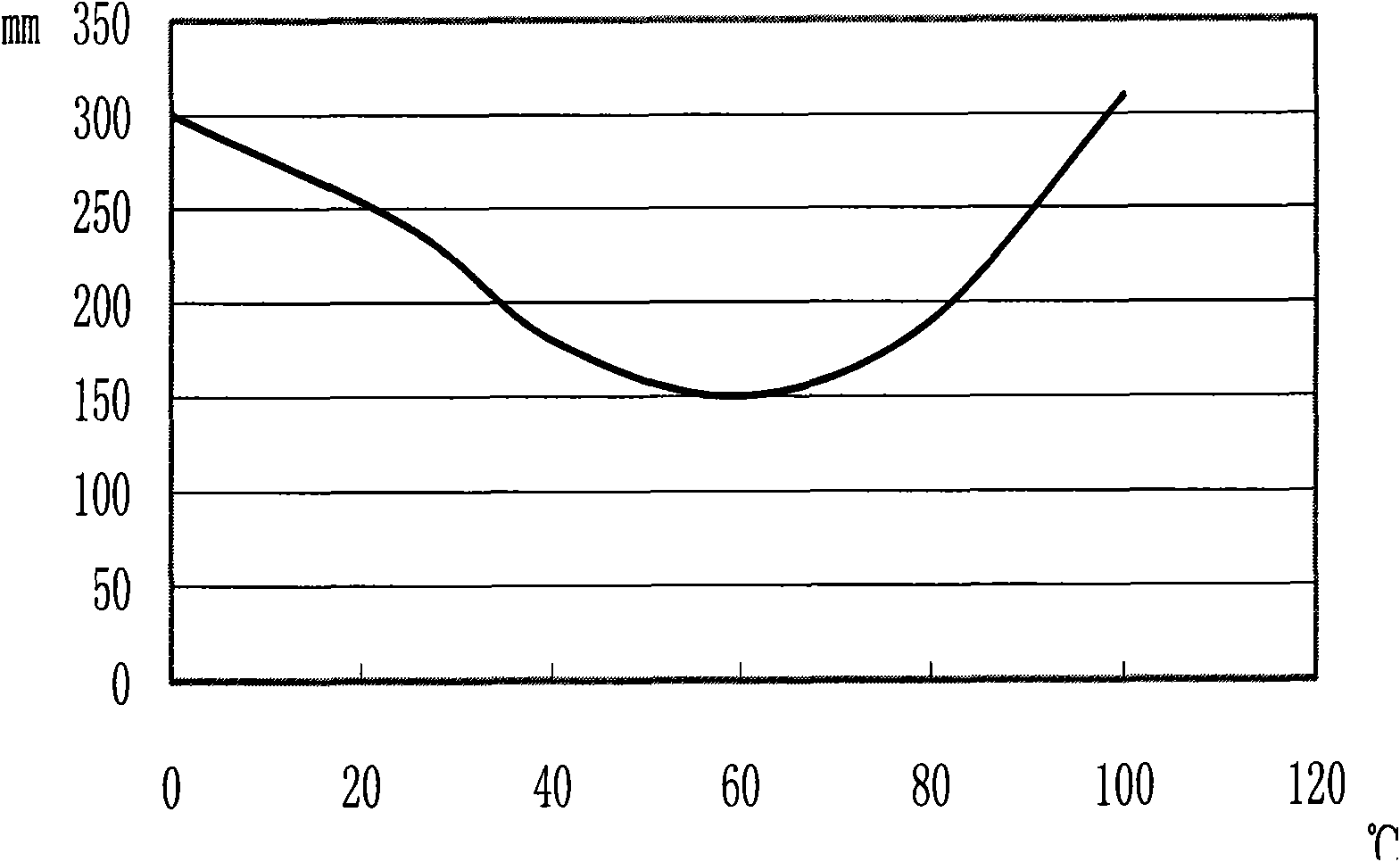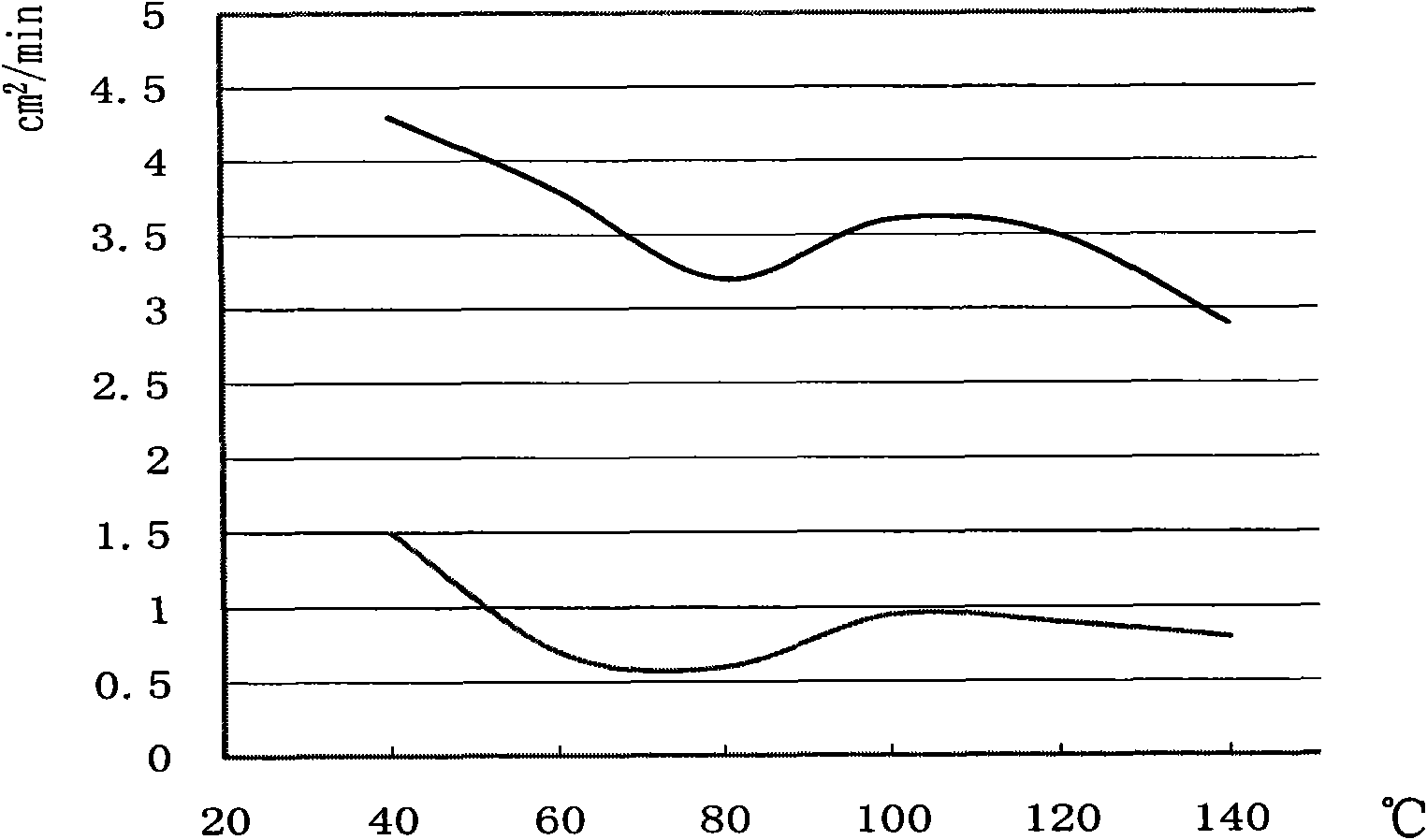Production method of natural cellulose membrane
A technology of natural cellulose and production method, which is applied in the field of production of natural cellulose film, and can solve problems such as unsatisfactory slipperiness and strength of natural cellulose film
- Summary
- Abstract
- Description
- Claims
- Application Information
AI Technical Summary
Problems solved by technology
Method used
Image
Examples
Embodiment 1
[0081] Put 350 kg of cotton pulp into 18% sodium hydroxide aqueous solution by mass percentage, and soak at 60° C. for 20 minutes to obtain an alkali cellulose soaking solution.
[0082] After adding 10 grams of pressing aid (Visco 44) in the soaking liquid, utilize a squeezing machine, and the squeezing pressure is 0.095Mpa, and pressing the soaking liquid removes excess lye, and pressing is until the mass percentage of methylcellulose in the alkali cellulose is 32%.
[0083] The pressed alkali cellulose is pulverized into fine loose crumb state 1150KG. Put the pulverized alkali cellulose at 60° C. for 2.5 hours to age.
[0084] Soak the aged alkali cellulose in 10% sodium hydroxide aqueous solution for 30 minutes for pre-alkalinization, and then pass it into CS 2 Carry out yellowing reaction for 60 minutes to obtain cellulose xanthate. The yellowing reaction temperature is 25 degrees, and the mass ratio of aqueous sodium hydroxide solution to alkali cellulose after aging i...
Embodiment 2
[0104] Put 350 kg of cotton pulp into 18% sodium hydroxide aqueous solution by mass percentage, and soak at 60° C. for 20 minutes to obtain an alkali cellulose soaking solution.
[0105] After adding 10 grams of pressing aid (Visco 44) to the soaking liquid, use a squeeze machine to press the soaking liquid to remove excess lye. The pressing pressure is 0.095mpa, and pressing is until the mass percentage of methylcellulose in the alkali cellulose is 32%.
[0106] The pressed alkali cellulose is pulverized into fine loose crumb state 1140KG. Put the pulverized alkali cellulose at 70°C for 2 hours to age.
[0107] Add the aged alkali cellulose to 10% sodium hydroxide aqueous solution and soak for 35 minutes for pre-alkalinization, and then pass it into CS 2 Carry out yellowing reaction for 90 minutes to obtain cellulose xanthate. Yellowing reaction temperature is 35 degrees, CS 2 The mass ratio to the aged alkali cellulose is 1:12.
[0108] Dissolve cellulose xanthate in wat...
Embodiment 3
[0126] Adopt the technique of embodiment 1, difference is not to add pressing aid before pressing,
[0127] Final product tested:
[0128] Moisture in finished natural cellulose film: 10.5%;
[0129] Longitudinal tensile strength: 33N / 15mm;
[0130] Transverse tensile strength: 17N / 15mm;
[0131] Longitudinal elongation: 15%;
[0132]Transverse elongation: 36%;
[0133] Vertical and horizontal average tearing degree: 1.5N.m 2 / g;
[0134] Slip: friction coefficient static 0.21, dynamic 0.19 (testing method: ASTMD 1894), anti-adhesive 71% RH (national standard);
[0135] Oxygen permeability 1.9cc / m 2 .24hrs (test method: ASTMD 1927 test condition: 23°C 0% RH);
[0136] It can be naturally degraded in a humid natural environment for 6 months to produce water and carbon dioxide.
PUM
| Property | Measurement | Unit |
|---|---|---|
| Longitudinal tensile strength | aaaaa | aaaaa |
| Transverse tensile strength | aaaaa | aaaaa |
| Longitudinal tensile strength | aaaaa | aaaaa |
Abstract
Description
Claims
Application Information
 Login to View More
Login to View More - R&D
- Intellectual Property
- Life Sciences
- Materials
- Tech Scout
- Unparalleled Data Quality
- Higher Quality Content
- 60% Fewer Hallucinations
Browse by: Latest US Patents, China's latest patents, Technical Efficacy Thesaurus, Application Domain, Technology Topic, Popular Technical Reports.
© 2025 PatSnap. All rights reserved.Legal|Privacy policy|Modern Slavery Act Transparency Statement|Sitemap|About US| Contact US: help@patsnap.com


